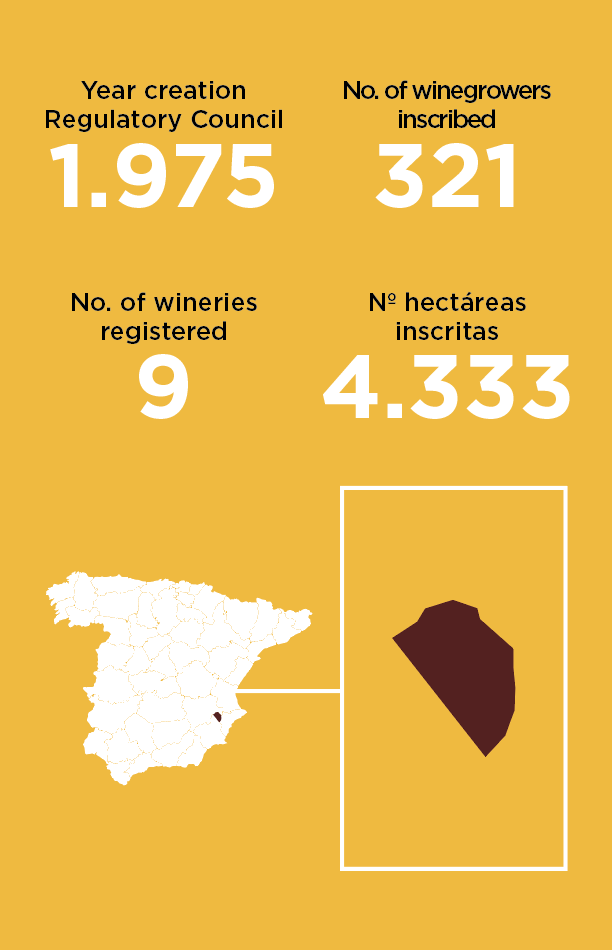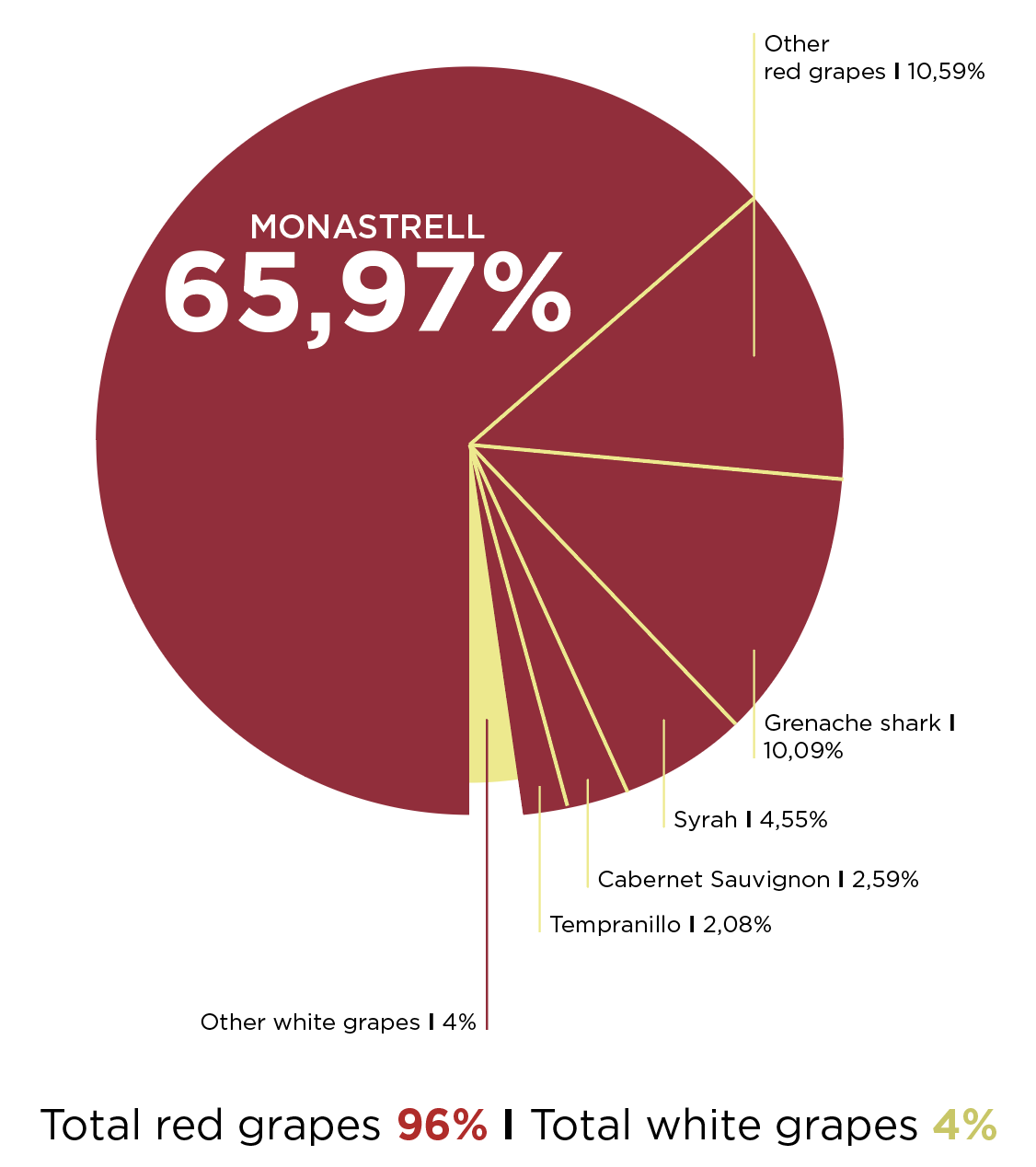Designations of Origin
Monastrell España is formed by 5 Designations of Origin, united under the same goal. We are the D.O. of Alicante, Almansa, Bullas, Jumilla and Yecla.
We know what we’re doing. But, most importantly of all, we know what we want: to drive the recognition of this wonderful variety that is a real part of our heritage.

- Geographical area
Province of Alicante (Autonomous Community of Valencia). 48 municipalities included in 8 sub-areas. L’Alacantì, L’Alcoià, Alto Vinalopò, Medio Vinalopò, Bajo Vinalopò, La Marina Alta, La Marina Baja and El Comtat.
- Characteristics of the winegrowing areas
Very poor calcareous sandy loam and sandy soils. The climate is marked by a great maritime influence until, at the end of the Sierra de la Oliva, it comes up against the thermal barrier effect of the plateau. The action of the winds of Levante through the mountain corridors ensures that the presence of humidity, in both winter and summer, gives a fresher character to the wines in the area.
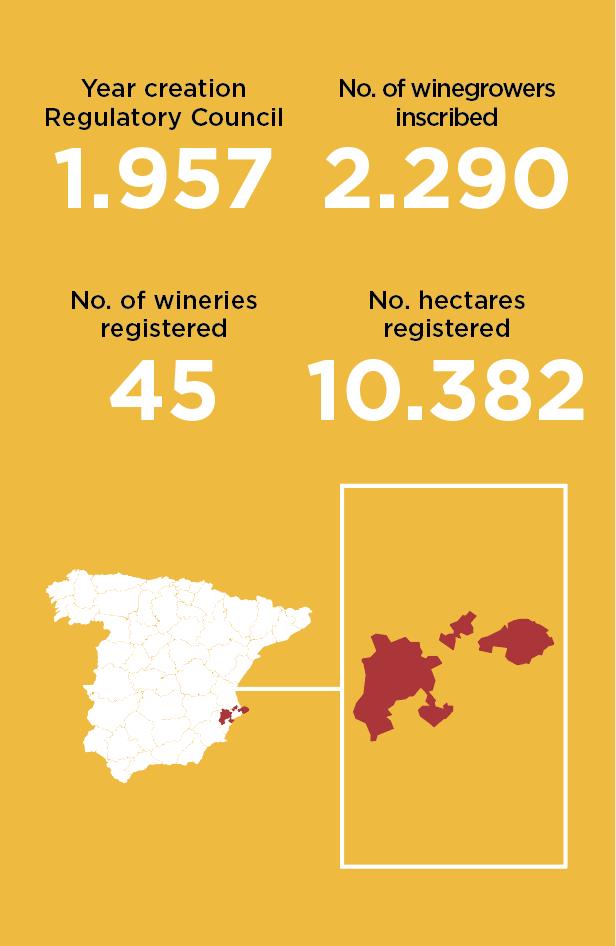
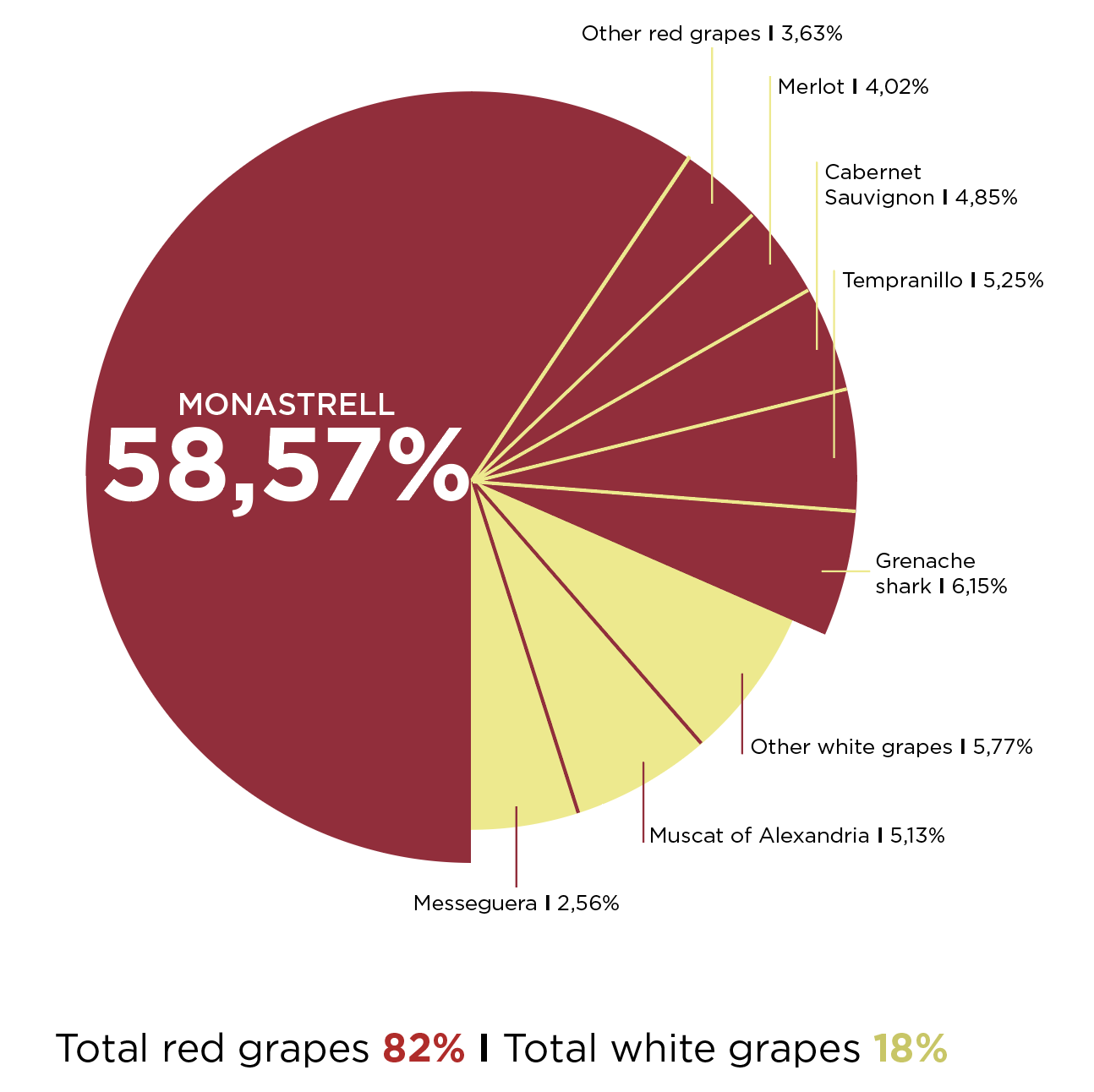
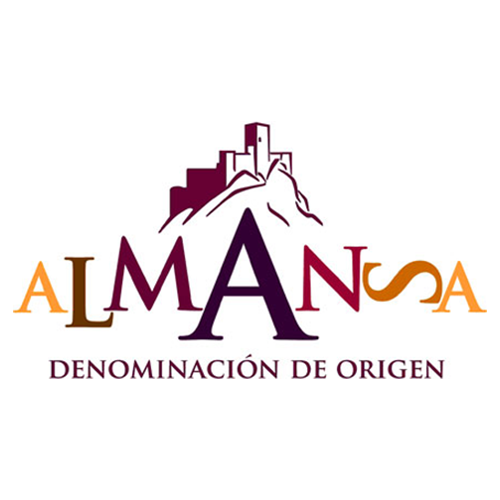
• Geographical area
Province of Albacete (Autonomous Community of Castilla La Mancha). 8 municipalities
• Characteristics of the winegrowing landscapes
A high plateau area, located at an average altitude of 700 meters, a transitional area between Levante and Castilla La Mancha. In general, the soils are rich in limestone, alternating areas with stony soil and little substrate with other sandier, deeper areas. In general, the land is not very fertile.
The climate is extreme continental with very cold, dry winters accompanied by very hot summers. Rain is concentrated in spring and at the end of summer, not exceeding a mean of 250 mm per annum.
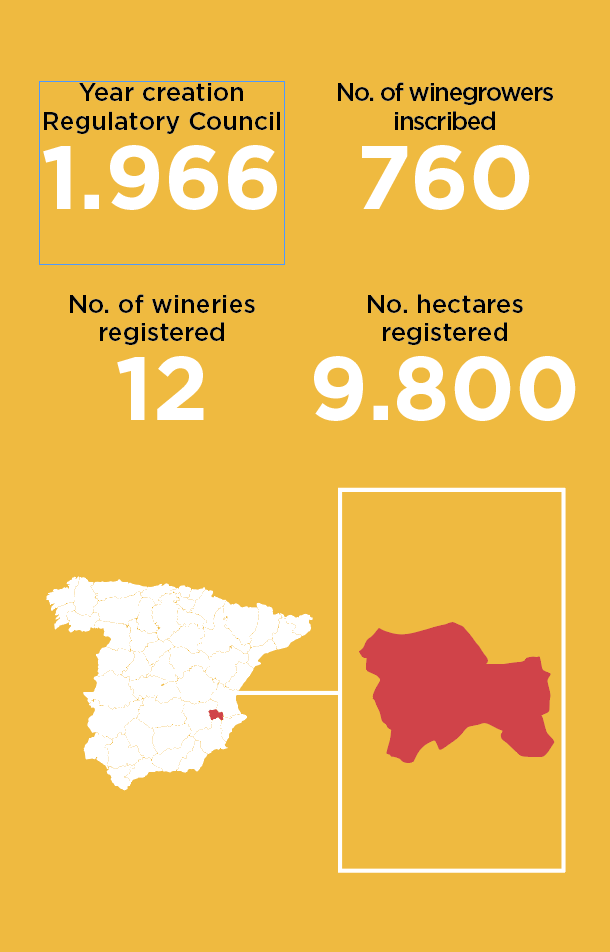
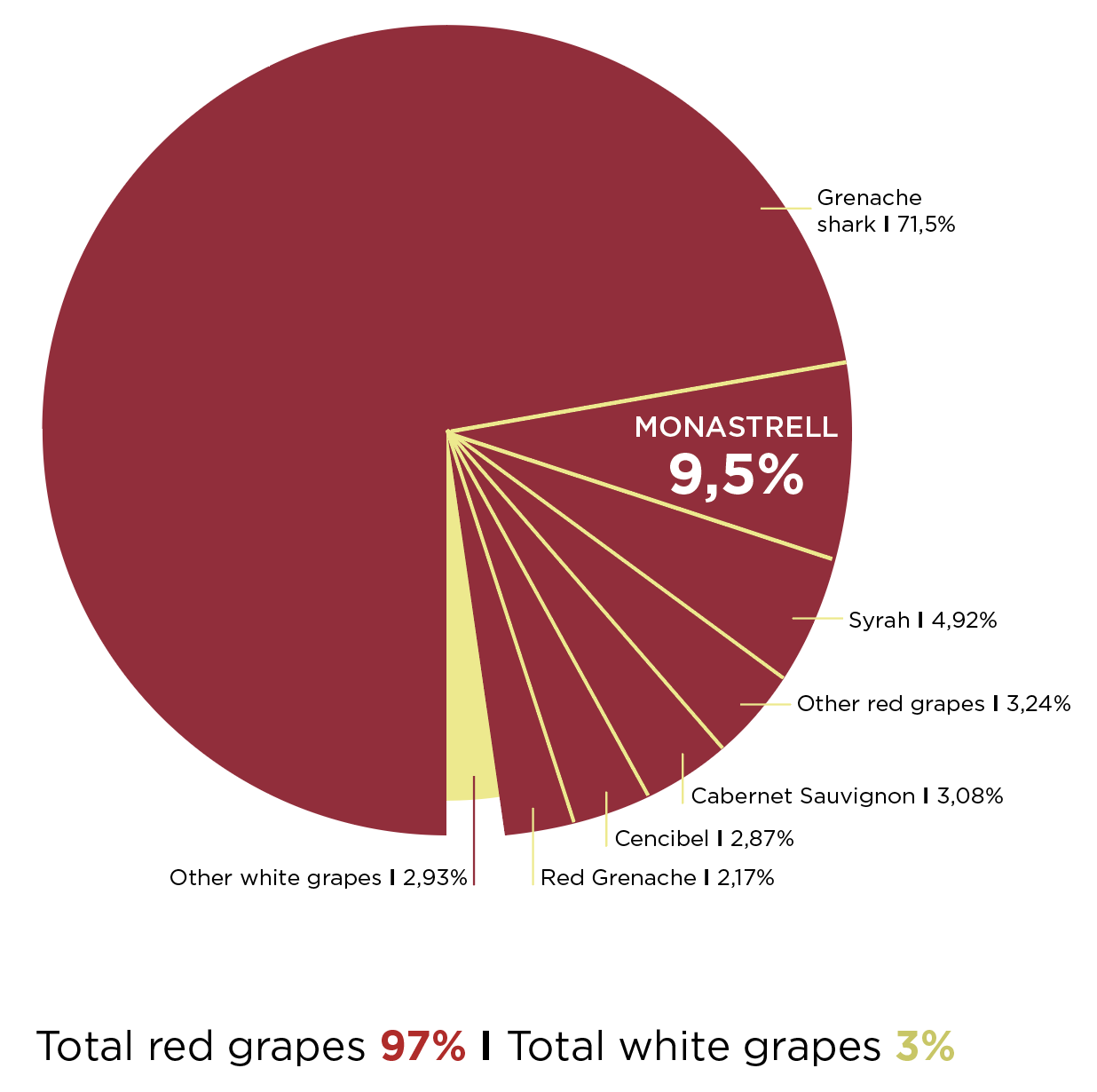
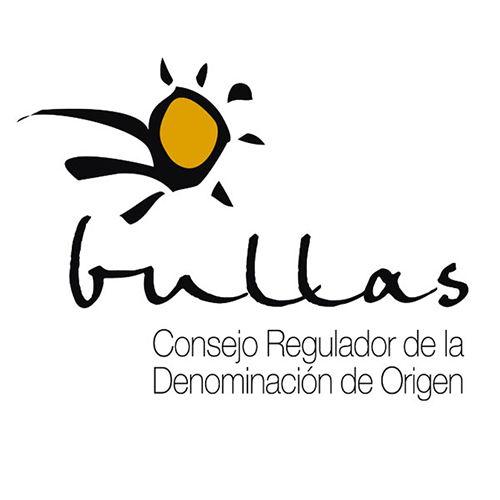
• Geographical area
Province of Murcia (Autonomous Community of the Region of Murcia). 8 municipalities
• Characteristics of the winegrowing landscapes
Rugged terrain, with a rising altitude from south to north, from 700 to 900 meters, offering small valleys with brownish limestone soil and with a limestone crust on the slopes, and floodplains in the centre of the valleys. Soils poor in organic matter, with a high calcium carbonate and quicklime content, loamy and lightweight with good drainage, primarily calcareous.
The Mediterranean climate is extremely affected by the altitude of the area. Winters are short but harsh, with episodes of snow. Summers are extremely hot during the day but with considerable temperature drops at night. The average rainfall is low,
around 300 mm. There is occasional torrential rain and storms, mainly in September and October.

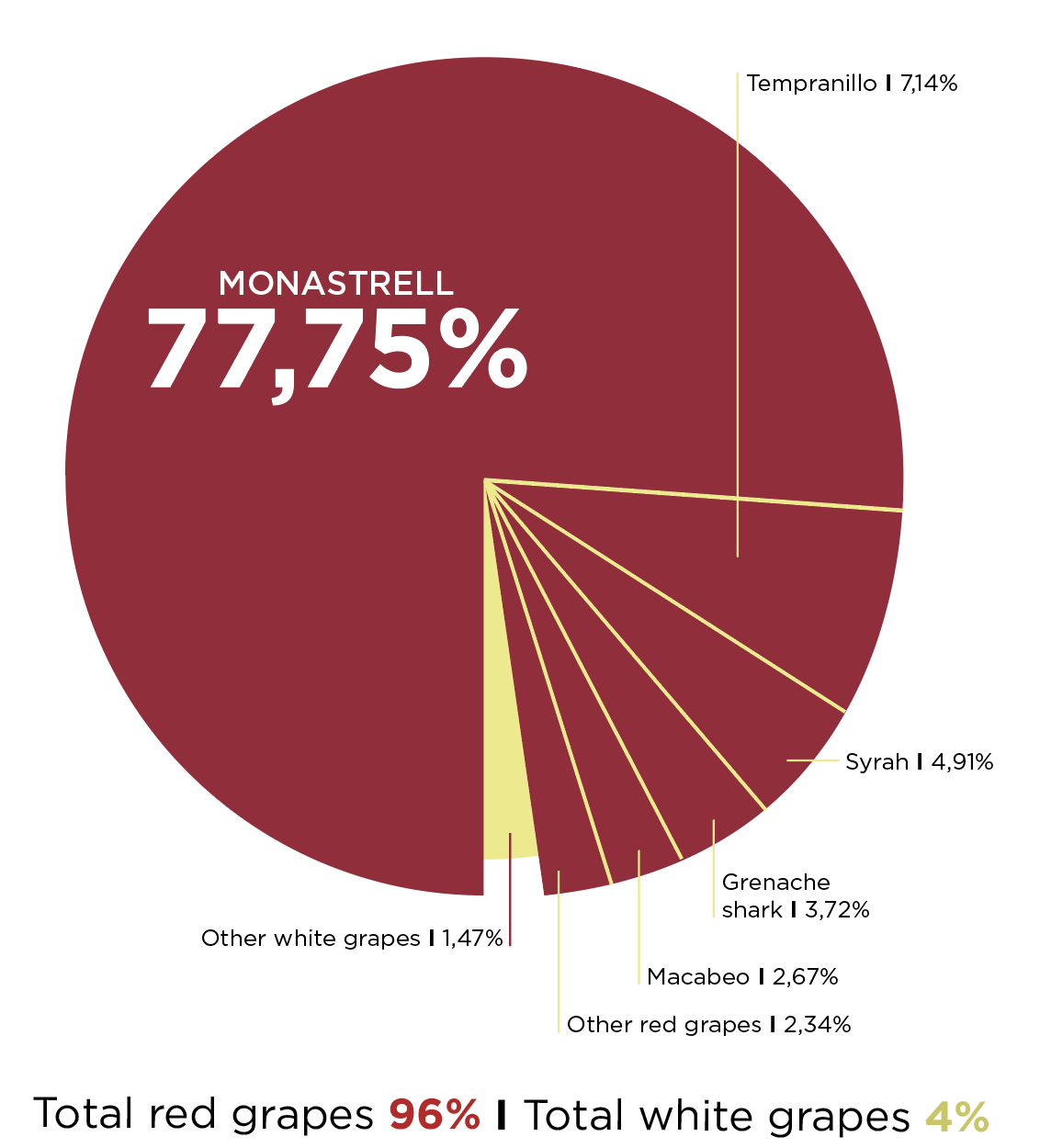
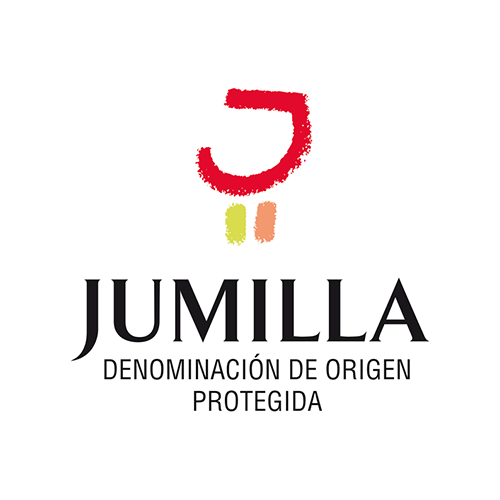
• Geographical area
Provinces of Albacete and Murcia (Autonomous Communities of Castilla-La Mancha and the Region of Murcia), 7 municipalities.
• Characteristics of the winegrowing landscapes
Most of the soils are limestone, loose, stony, poor in organic matter and nutrients. Normally, these are deep soils although, on occasions, for their exploitation, it is necessary to break the hard lime crust on the surface or just below it, which is characteristic of limestone soils in arid climates in which the soil profile washing with rainwater is incomplete. On the other hand, these are allochthonous soils that have developed on stony limestone deposits dragged from the surrounding mountain formations from the late Tertiary (Miocene-Pliocene) and early Quaternary (Pleistocene).
This is a continental climate, influenced by the closeness of the Mediterranean and the Castilian plateau. It is sunny and arid, with low, irregular rainfall, having a mean of 300mm per annum.
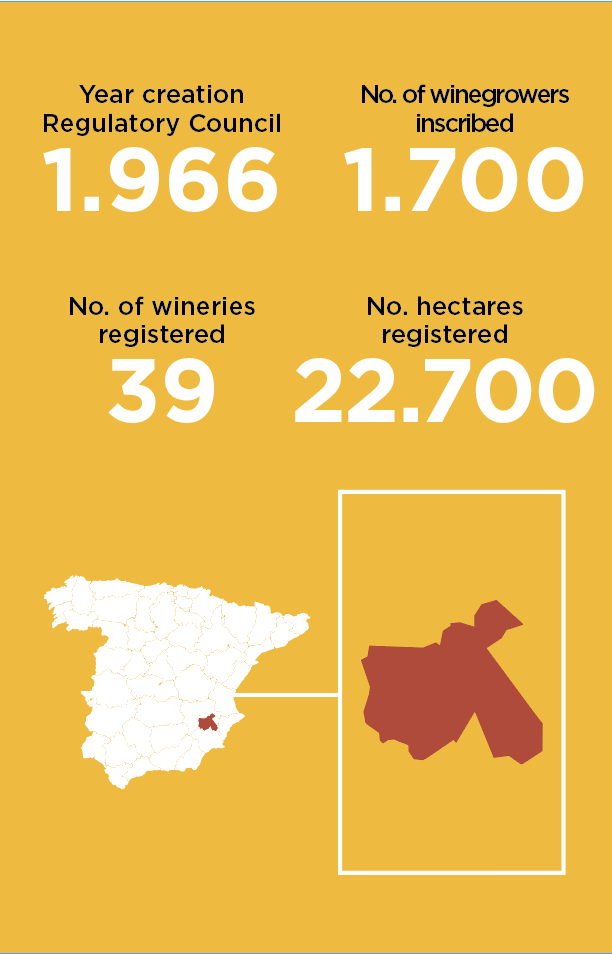
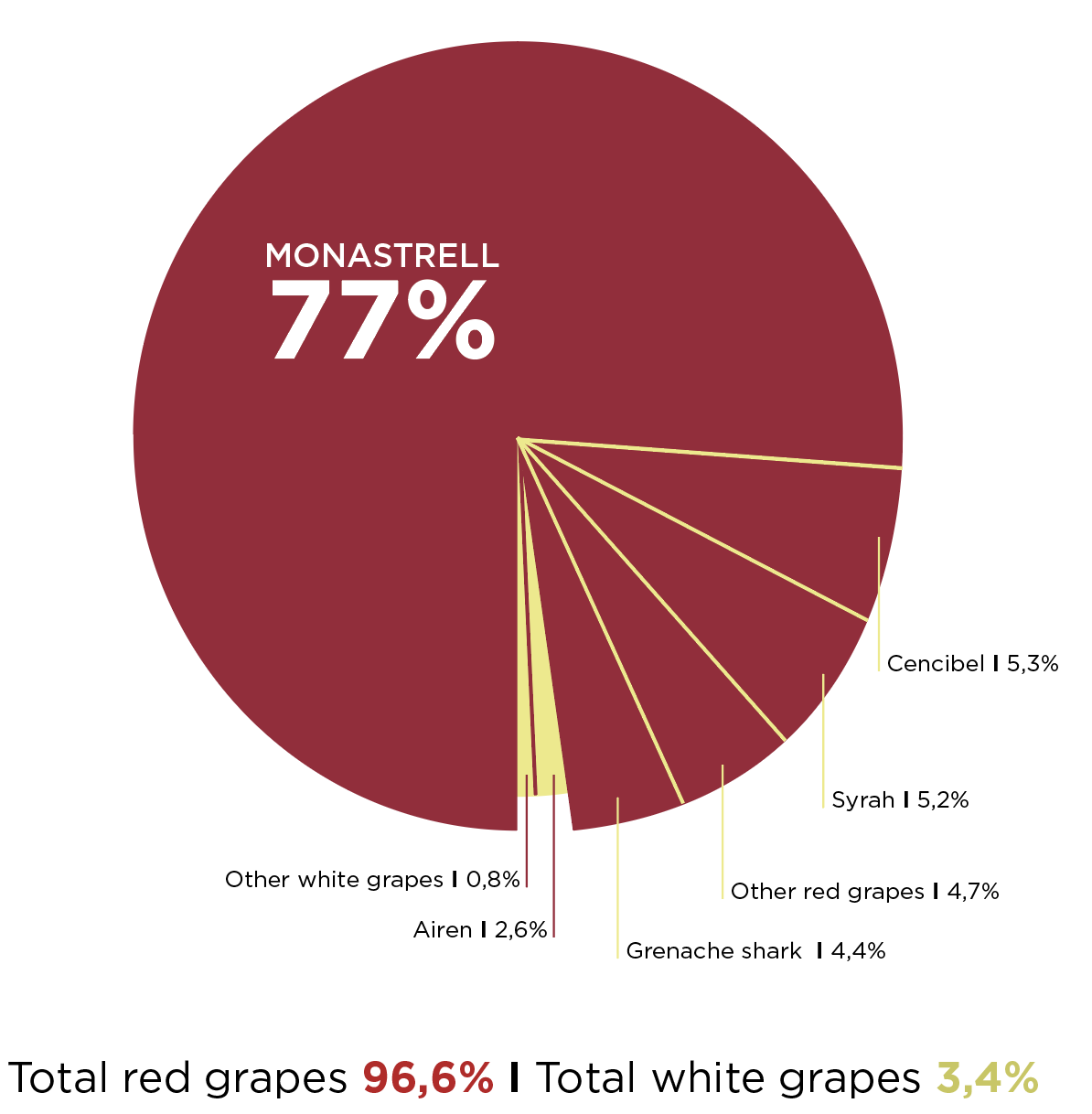
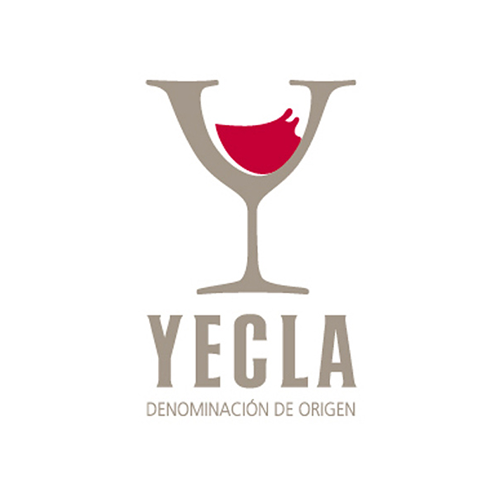
- Geographical area
Province of Murcia (Autonomous Community of the Region of Murcia). 1 municipality.
- Characteristics of the winegrowing areas
A transition area between the meseta and the Mediterranean, a plateau where the vineyards are located at altitudes that range between 535
and 800 meters above sea level. The glacis are the most typical and iconic landforms in the area. The main feature of the land is its endorheic valleys. The soils in the area are generally limestone, a thick subsoil with the presence of carbonates and a sandy surface with clay formations. It is low in organic matter but sufficiently healthy and with adequate permeability.
The climate at Yecla is continental-Mediterranean (IGN). With long, cold winters and hot summers. The area is noted for a large temperature variation (of 20ºC). The mean annual insolation is 3417 hours. Precipitation is scarce and localized in autumn and spring, frequently in the form of stormy downpours. Over the year, the mean rainfall is around 300 mm.
